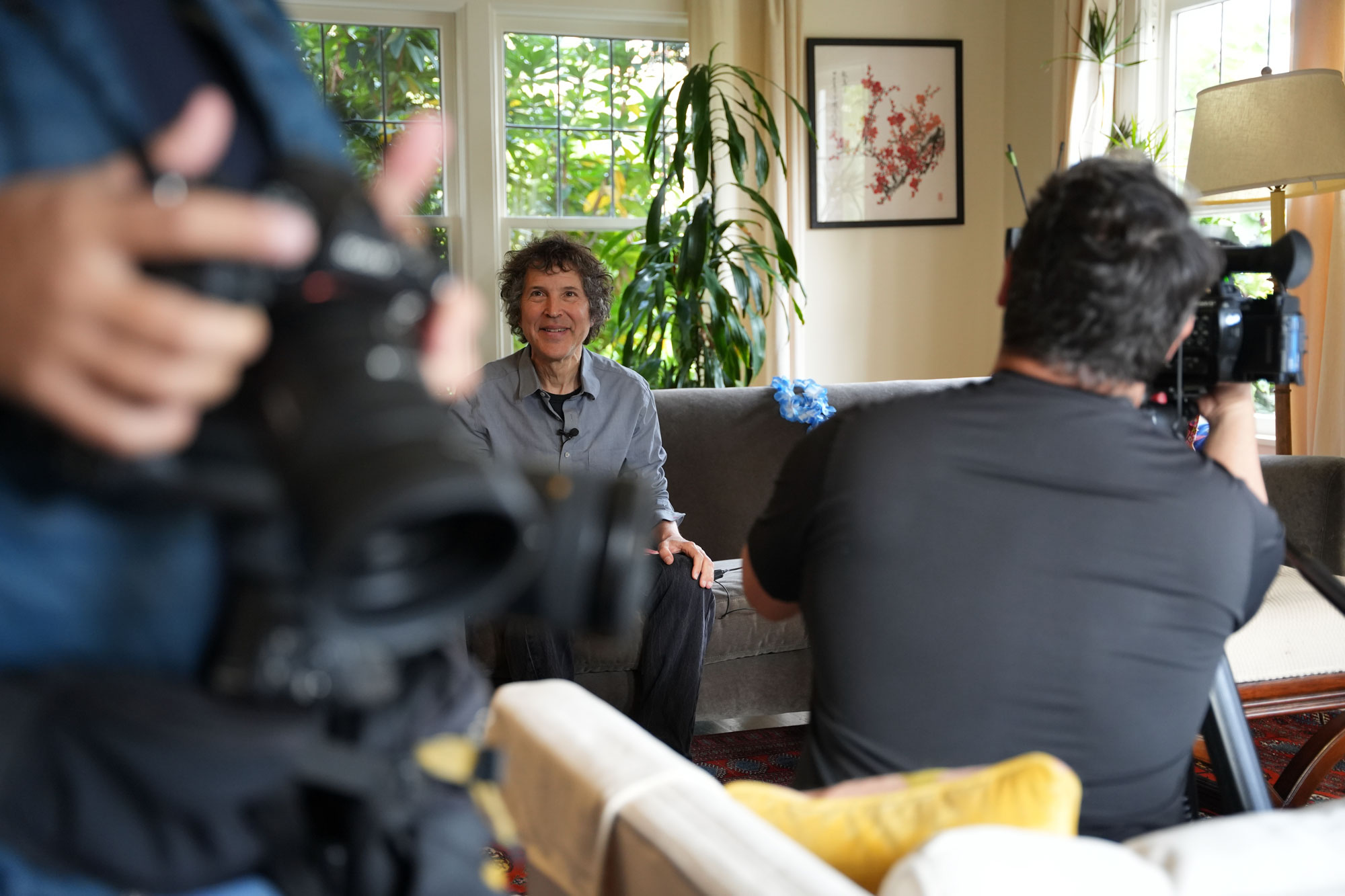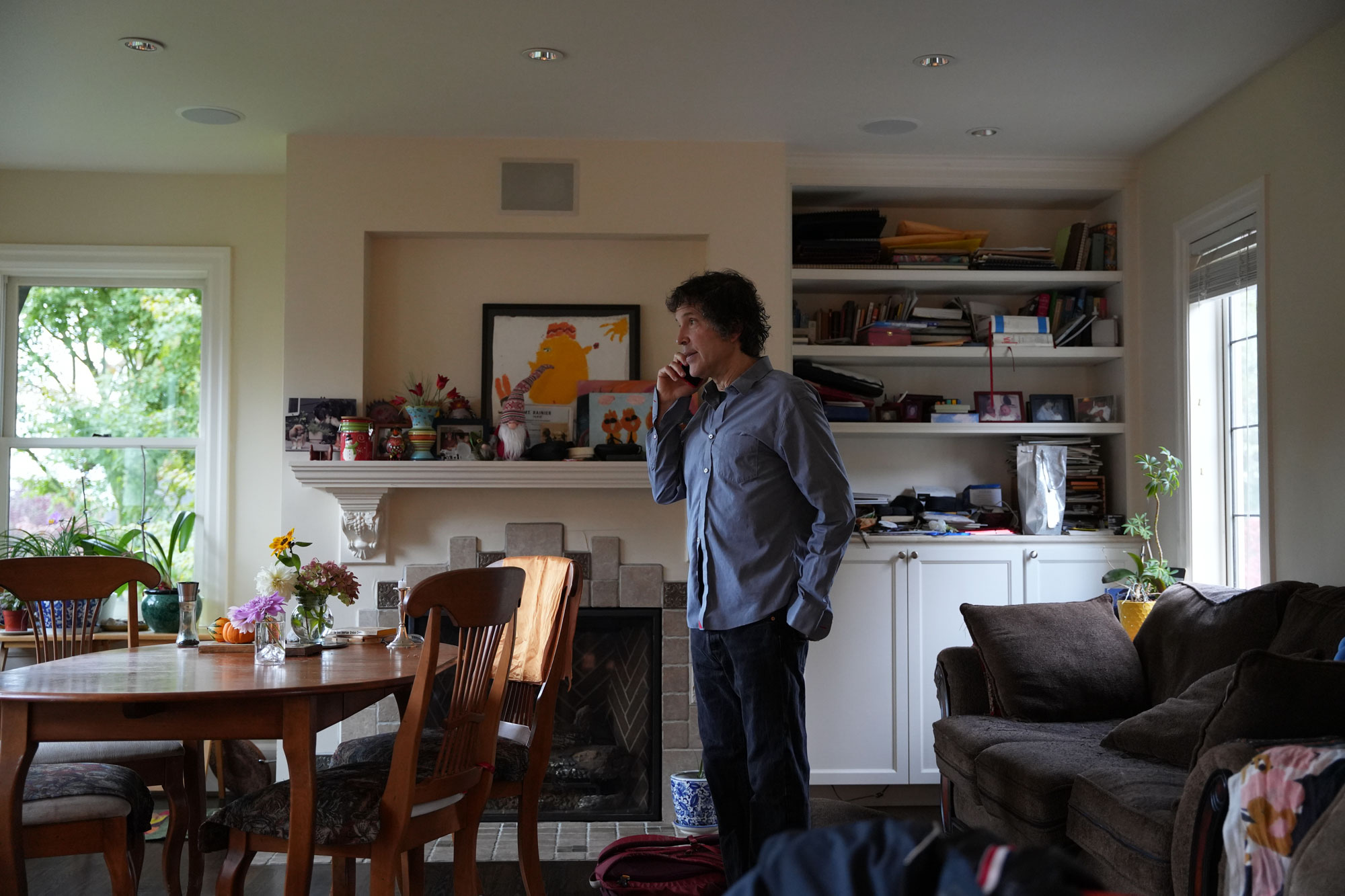'Kind of a crazy idea' 'Kind of a crazy idea' 'Kind of a crazy idea'
David Baker’s groundbreaking work in de novo protein design opens a new chapter for science.

David Baker’s groundbreaking work in de novo protein design opens a new chapter for science.
“We were actually kind of on the lunatic fringe for many, many years,” Professor David Baker said during a rapidly organized campus news conference on the sunny October morning his Nobel Prize in chemistry was announced.
Standing at the podium in a rumpled button-down shirt and with his trademark tousled hair, he described his work in protein design in a few pithy sentences. Proteins are “the miniature machines that carry out all the important jobs in our bodies and in all living things,” he said. Until recently, we only knew about the proteins we discovered in nature. Science focused on identifying the existing proteins and trying to modify them to alter their function. He explained: “That you could make new [proteins] was kind of a crazy idea.” But doing so could bring solutions to current problems including cancer, Alzheimer’s disease and carbon storage.
Baker described his scholarly journey as “a long and circuitous path. … I didn’t work on proteins until I became a professor here,” he said. In 1998, he and his co-workers created Rosetta, a program that looks at amino-acid sequences to predict protein structures.

David Baker speaks on the phone in his home in Seattle shortly after learning he had received the Nobel Prize in Chemistry. Photo by Ian C. Haydon, UW Medicine Institute for Protein Design.
The software, known today as Rosetta Commons, is used around the world and free for non-commercial applications. Baker and his team realized they could use the software in reverse to design proteins that might do things like target cancer cells or neutralize viruses. They designed and synthesized their first completely new protein in 2003.
Nine years later, Baker became the founding director of the UW’s Institute for Protein Design. In 2022, a COVID-19 vaccine that contained nanoparticles developed by institute scientists was approved in South Korea for use in adults. Now called SKYCovione, it is the first computationally designed protein medicine in the world.
More than 90 of Baker’s former students and postdocs have gone on to faculty positions around the world. He also has more than 100 patents and has co-founded 21 companies. As the Henrietta and Aubrey Davis Endowed Professor, Baker is housed in the Department of Biochemistry. But he is also an adjunct professor in computer science, physics, genome sciences, bioengineering and chemical engineering—evidence of the UW’s broadly collaborative campus. It’s “an absolutely wonderful place to do science,” he said.
“Protein design has huge potential to make the world a better place, and I think we’re just at the very beginning.”
David Baker
Baker, 62, grew up in Seattle and attended Garfield High School. His mother, Professor Emerita Marcia Bourgin Baker, was a geophysicist in the Department of Earth and Space Sciences. His father, Professor Emeritus Marshall Baker, was a theoretical physicist in the Department of Physics. His wife, Professor Hannele Ruohola-Baker, is associate director of the UW’s Institute for Stem Cell and Regenerative Medicine.
On Oct. 9, the Royal Swedish Academy of Sciences awarded Baker one-half of the prize “for computational protein design,” noting that he “has succeeded with the almost impossible feat of building entirely new kinds of proteins.” The other half of the prize went to Demis Hassabis and John Jumper of Google DeepMind for developing an AI model to solve the 50-year-old problem of predicting proteins’ complex structures.
“We’ve really learned a lot about how to design proteins with new functions,” Baker said. “I think protein design has huge potential to make the world a better place, and I think we’re just at the very beginning.”